The Maritime Museum of Montenegro Kotor is the organizer of the exhibition called "God's book in 100 languages", authored by archpriest Nemanja Krivokapić, which opened on March 2, 2024. in the gallery of this museum institution in the Old Town in the presence of a large audience.
The exhibition shows a part of the rich collection of Bibles in different languages of the world from the author's private collection, in which, in addition to several editions in Serbian, among others, there are also those in: Russian, Chinese, Japanese, Kyrgyz, Arabic, Tamil, Syriac, Hindi, Khmer, Urdu, Azerbaijani, Latin, Modern German, Lusatian-Serbian, Flemish, Welsh, Ukrainian, Latvian, Hebrew, Church Slavonic, Kurdish-Kurmanji, Laotian, Korean, Fante, Zulu, Afrikaans, Malagasy, Bulu, Danish, Norwegian, Swedish, English, Icelandic , Finnish, Greek, Ancient Greek, Romanian, Belarusian, Albanian, Macedonian, Croatian, Retro-Romance, Polish, Bulgarian, French, Italian...
A part from the collection in different languages of the world from the author's private library of over 100 Bibles is on display, in a gallery arranged by the continents from which they came (Europe, Africa, America, Australia and Asia).
The director of the Maritime Museum of Montenegro, MA Maja Uskoković, said that placing the Bible in a museological framework provides the possibility of a deeper understanding of its role in society, throughout history, helping us to better understand the context and develop empathy towards other times and places.
Curator, ethnologist of the Maritime Museum of Montenegro, Jelena Karadžić, recalled that the Bible was created over a long period of time, from the 5th century B.C. to the 2nd century AD and written in three languages: Hebrew, Aramaic and Greek. "The Bible is significant for human civilization and culture in many ways. For believers, it is the Holy Book that contains God's word, for Christians it is the foundation of faith and practice of moral principles and spiritual strength. Believers find in it guidelines for life, consolation and hope", said Karadzic, indicating that the Bible is considered the most translated, most circulated and best-selling book in the world.
So, as she stated, according to data from September 2021, the complete Bible has been translated into 717, and some of its parts into 3,495 languages.
"According to the estimates of some world organizations, from 1815 to 2015, more than five billion copies of the Bible were sold, which makes it the best-selling book of all time," said Karadzic, indicating that, as a book translated into almost half of the spoken languages, is found in every library in the world, so as the Holy Book of the largest part of humanity, it has permanently marked human existence, and in the time to come, it will continue to permanently inspire humanity.
The author of the exhibition, archpriest Nemanja Krivokapić, thanked the employees and the director of the Maritime Museum, Maja Uskoković, from whom the idea for such an exhibition came.
"Even last year, she asked me to start 2024 with this exhibition." It was a great joy and a great honor for me that this exhibition of ours was organized in such an eminent institution. Thank you to everyone from the Museum who made an effort to make the exhibition look the way it does, because everything required a lot of effort (listing, catalogs, legends...). "Certainly, this is a great opportunity to finally and publicly thank all those who have ever given me one of their Bibles, because that's how this collection of mine came into being," said Fr. Nemanja, adding that he got most of the Bibles from people dear to him, who remembered him when they were on trips.
In addition to being interesting because of the number of Bibles in various languages, for him, as he pointed out, it has much greater significance, "because it is also a collection of friends."
Brother Fr. Nemanja, Pavle, who lives in Geneva, Switzerland, is responsible for a third of the Bibles gathered in this kind of collection.
He told the audience about his travels from which he brought his brother rare Bibles, among others, in Burmese (from today's Myanmar, a country where it is difficult to find a church, let alone a Bible, a gift from believers from a Baptist church), Japanese (bought near the Church of the Resurrection of Christ in Tokyo, built by St. Nicholas of Japan in the 19th century, a Russian saint who preached Christianity when it was banned in Japan) and in the Coptic language (arrived three years later after a trip to Egypt where he visited several churches).
Opening the exhibition, Archpriest-Stavrophor Gojko Perović said that the Bible is the most translated book that has reached the most human souls.
"More than Dostoevsky, more than Shakespeare, more than any philosopher, that is this collection." Otherwise, the word Bible itself means books, library. It's a collection of books. Throughout the history of mankind, along and across all the meridians of the world, that book is present so that we cannot see the temporal or spatial limits of its presence. Since writing began, from the time of the prophet Moses, somewhere around 1,300 years ago. before Christ, until its first translation, until its exit from that small Jewish community into the great, then only known, world, until its translation into Greek in the 3rd century. before Christ (the famous 70-orica translation), a thousand years passed. So many years have passed since she was only among the Jews. Since then, until the translation of Cyril and Methodius into Slavic, and in the meantime it was also translated into Coptic and Latin and many other Mediterranean languages, a thousand years have also passed. From Cyril and Methodius to us also over a thousand and more. So, these are the millennia of the presence of this book (with its anxieties, prayers, sorrows and happiness, from the prophet David and his psalms, Song of Songs, Book of Sermons...) which reached every nation", said Fr. Gojko.
It is nice to hear, he added, that the Bibles at the exhibition, organized by Fr. Nemanja, they were not brought by carrier pigeons, storks, nor did they arrive by e-mail, but by a friend to a friend.
"That's how the Bible was written." If you look at the Gospel according to Luke, you will see that he did not say to himself "now I am going to write the Gospel", but he wrote a letter to his friend Theophilus to tell him what he knew about the events. Even that was not enough for him, but he wrote another letter, which is the "Book of the Acts of the Apostles" etc. So it is written, man to man, friend to friend. Those books were written, not only in the love of man for God, but also in the love and trust of men for men, and this has come down to us today, who would give everything, perhaps even their lives, but would not give the Bible or faith in the postulates transmitted by man man, father to son, grandson, great-granddaughter, and we came to our liturgies, when people came out, carrying icons, sometimes even Bibles. If you asked them what they were defending, the answer was that not everyone was a doctor of theology, but all of them were ready to defend with their lives the freedom to interpret and read the Bible the way it has been read and interpreted for centuries, and that was best done in the Church," he said. is about Gojko.
He adds that Bible translations "are not simply copies of some old dusty book that no one understands, but it is always a new life."
He reminds that the Bible was translated into Serbian for the first time in the middle of the 19th century, when Vuk Karadžić translated the New Testament, and Đura Daničić the Old Testament, but our people, Orthodox believers, felt that they needed to innovate.
"This applies to all languages of the world, not only Serbian. The Bible has never been translated to the end... From Vuk Karadžić and Đura Daničić, to the translation of the Holy Synod of Bishops and the translation of Metropolitan Amfilohi and Bishop Athanasius, it goes on and on and it is a living thing that is taking shape," said Fr. Gojko, indicating that the best thing that such exhibitions can do is inspire some young people so that they too might get a motive to translate the Bible in a new way.
He reminded that the contribution of Fr. Nemanje, the famous Milin family, from which his professor Dragan Milin is also a member, provided the latest translation of the Holy Scriptures into the Serbian language, which was promoted last year in the church of St. Nicholas.
In the musical part of the program, saxophonist Vojislav Marković performed, accompanied by pianist Ana Mihaljević, MSc.
The exhibition was also attended by the president of the SO Kotor Maja Mršulja and the secretary of the Secretariat for Culture, Sports and Social Activities Tatjana Kriještorac.
The exhibition in the gallery of the Maritime Museum of Montenegro is accompanied by an appropriate catalog.


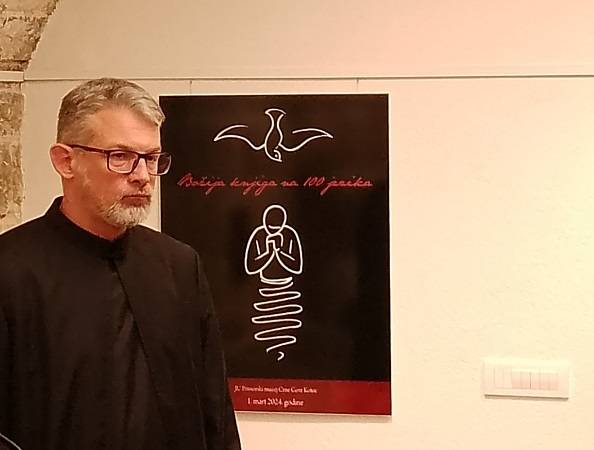

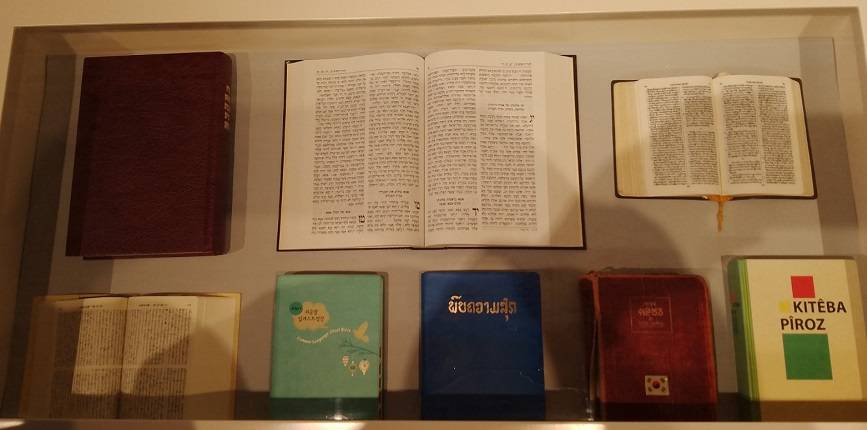
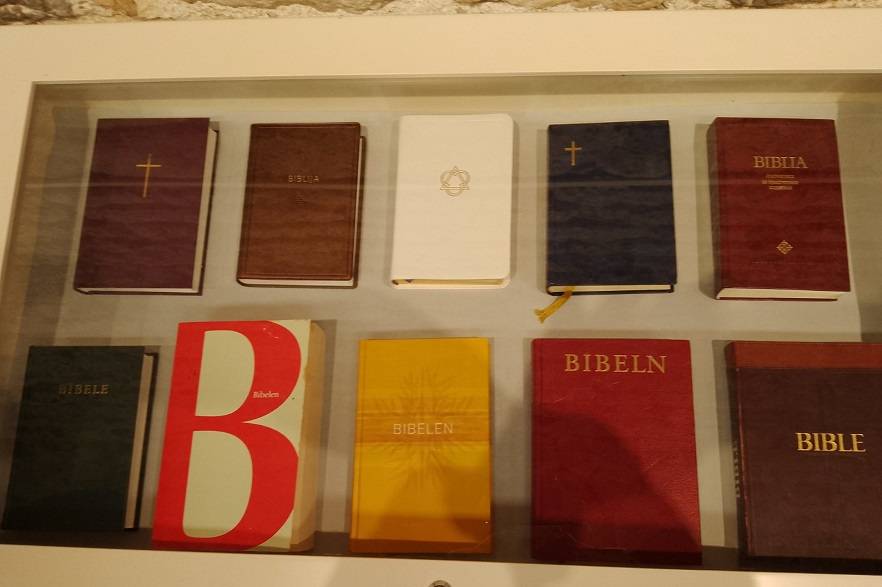
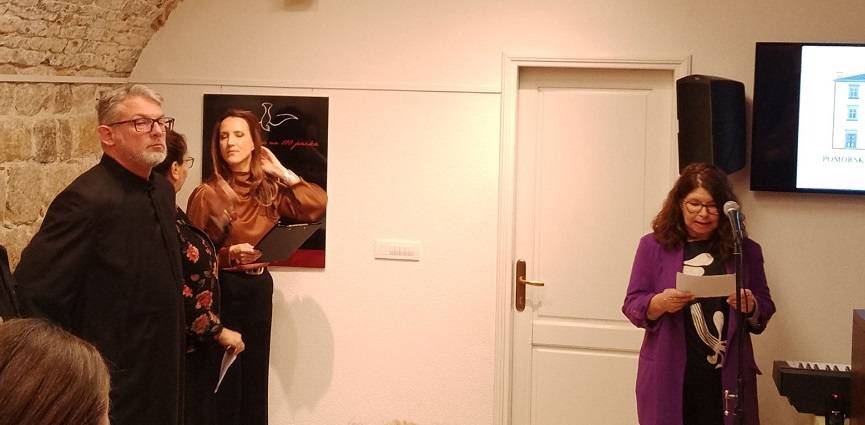
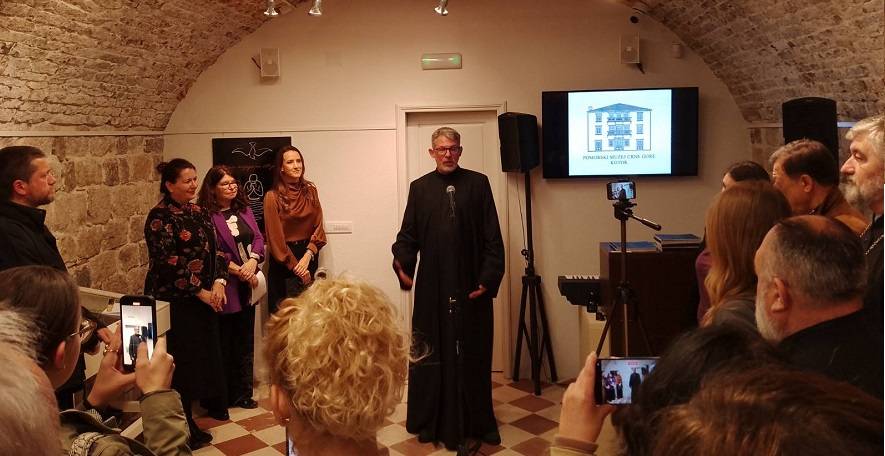
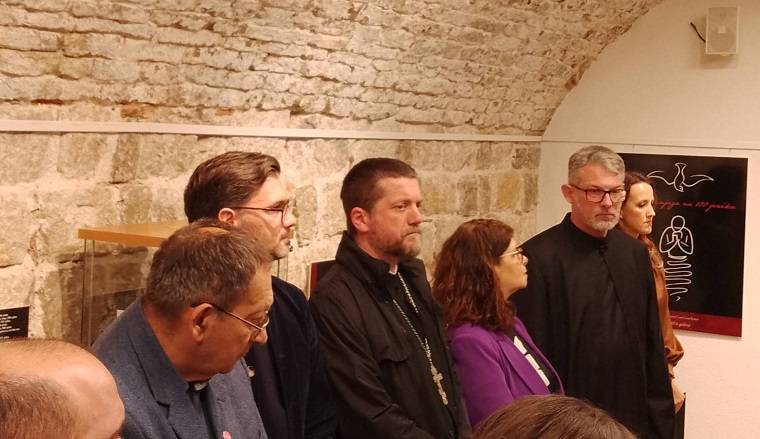
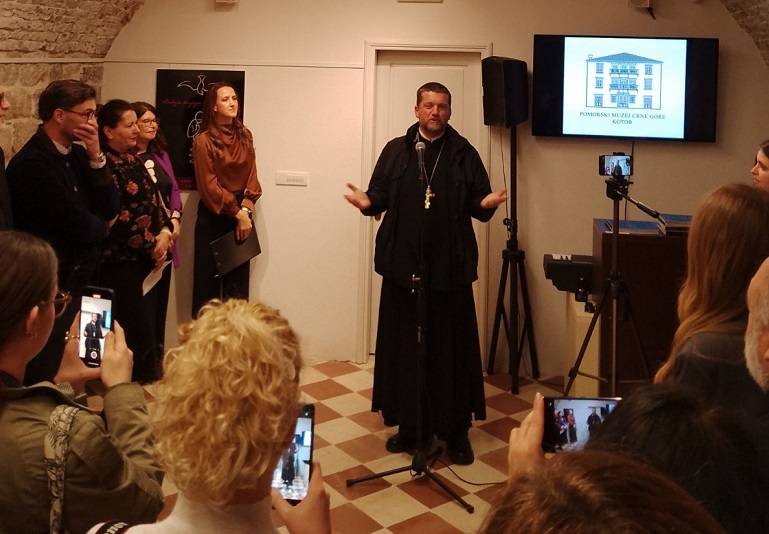
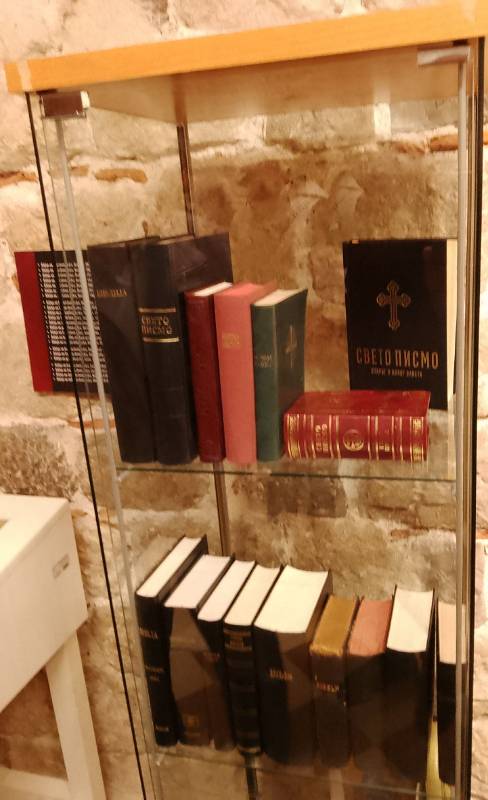
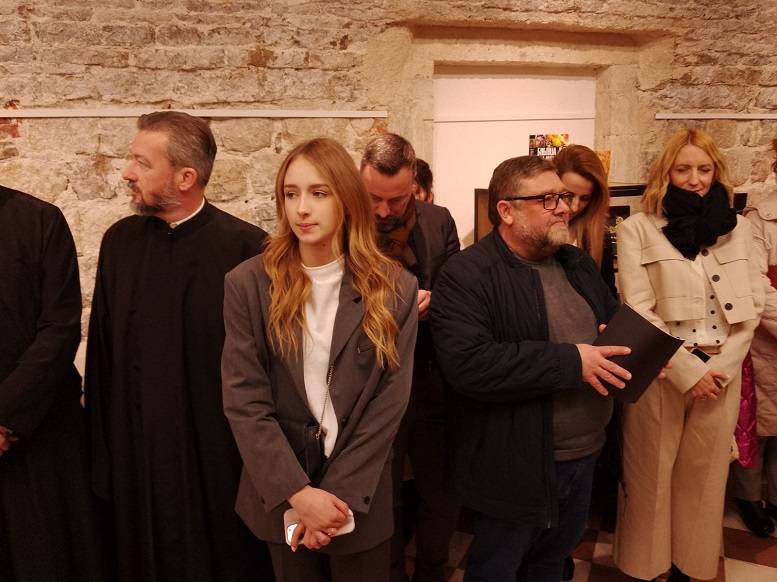
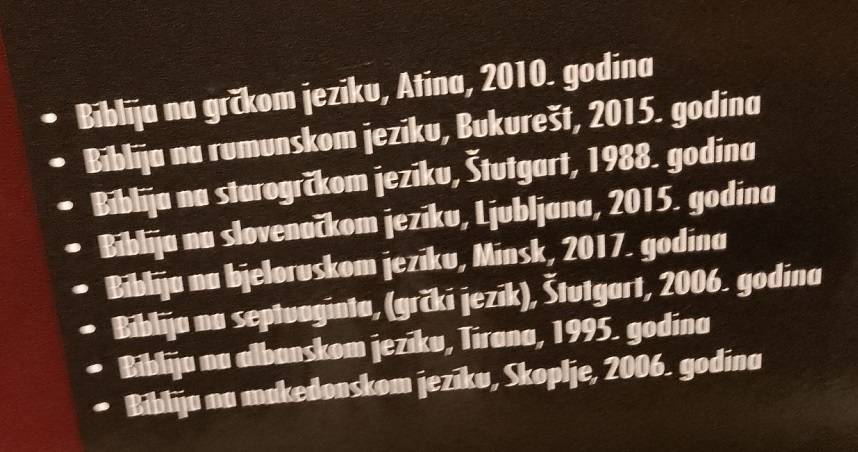
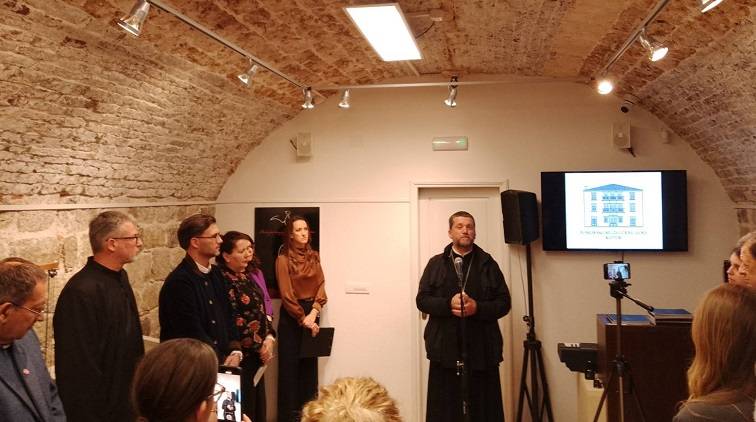
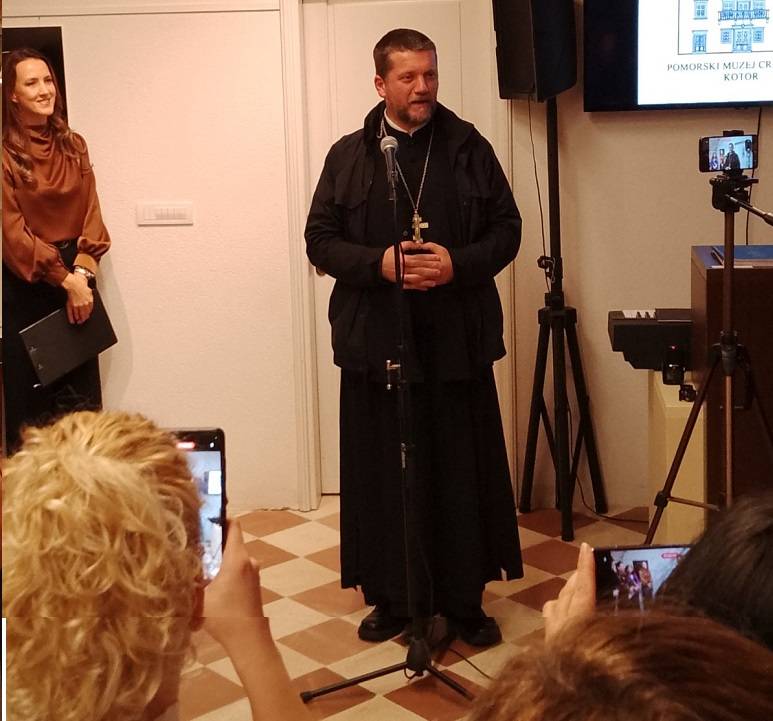
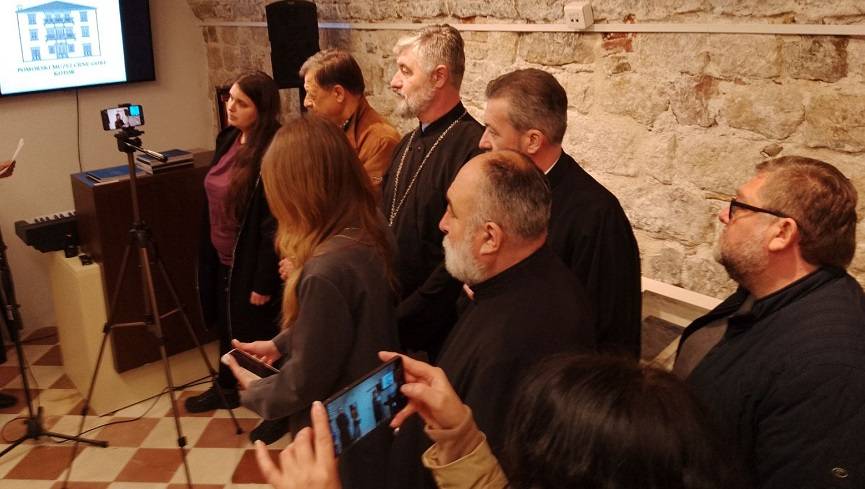
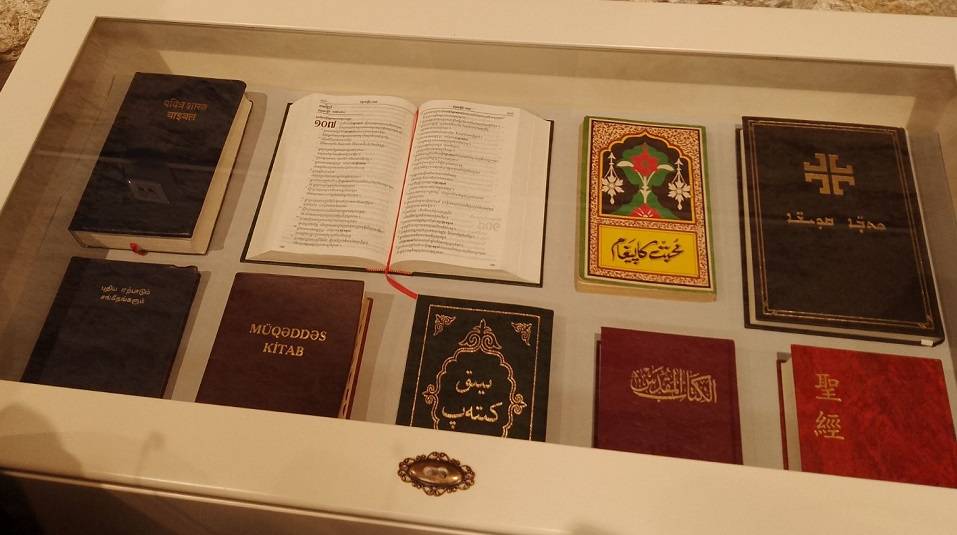
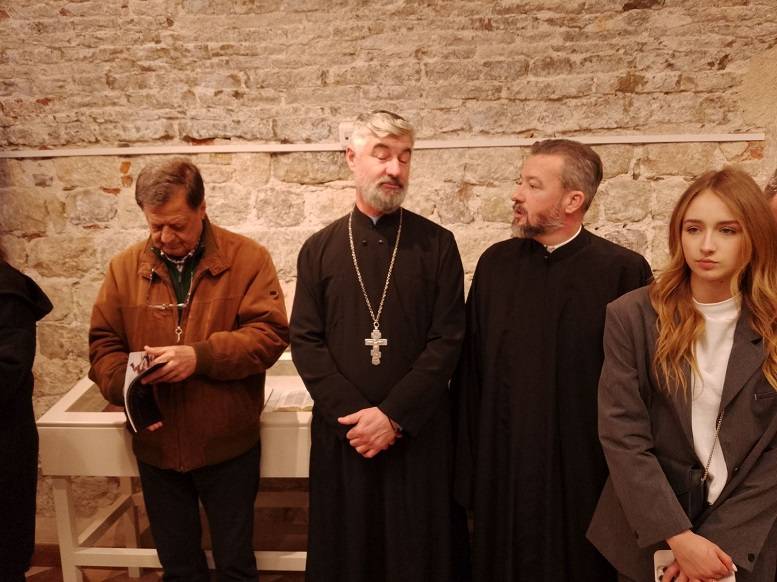
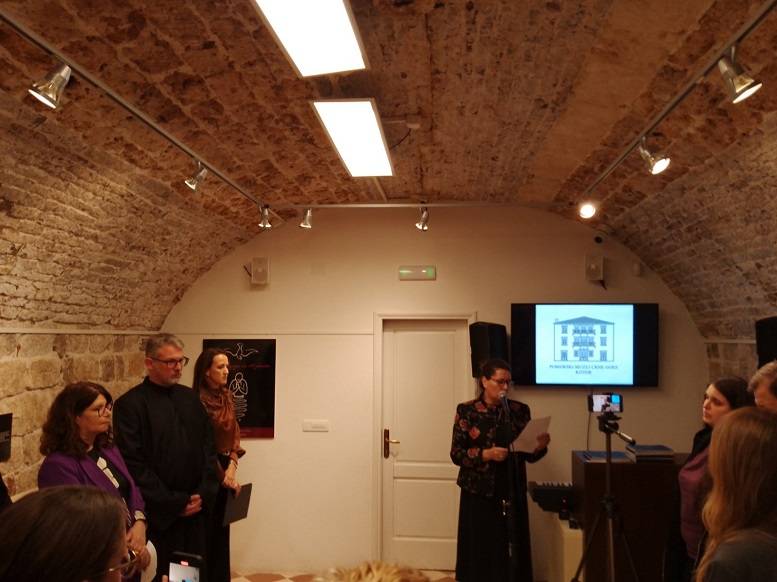
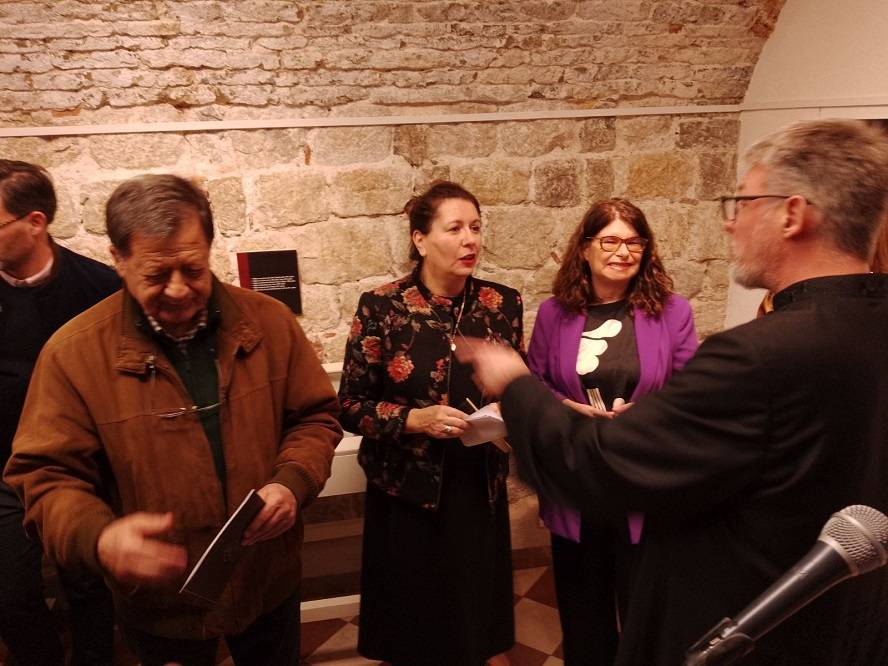
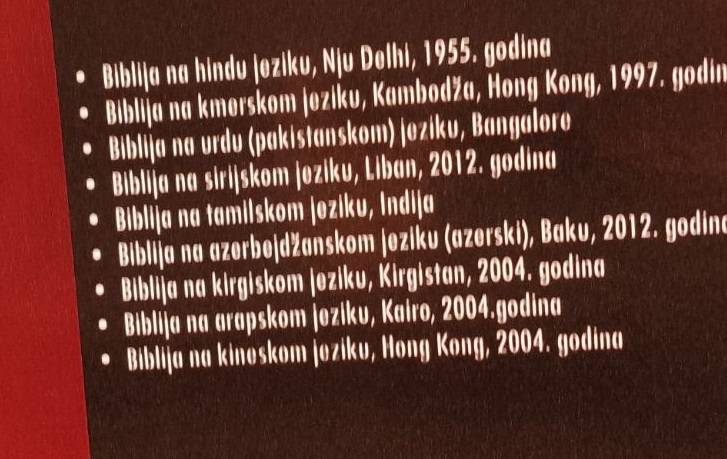
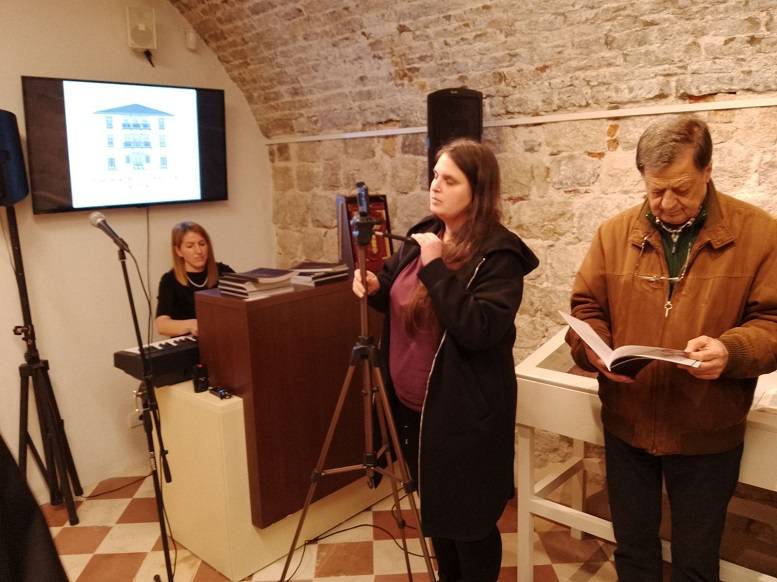
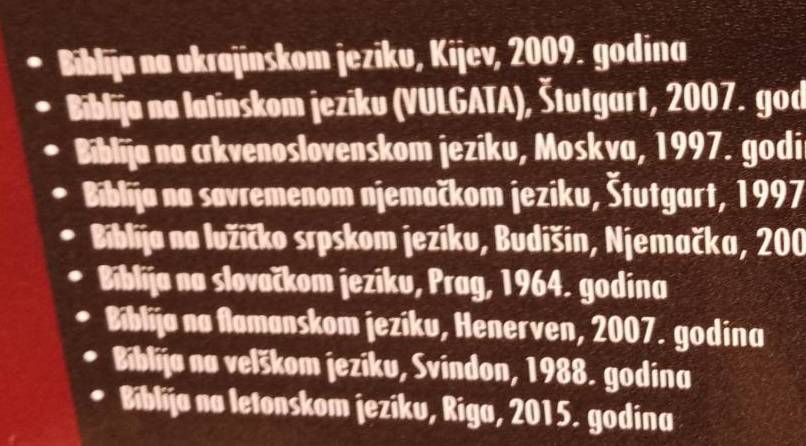
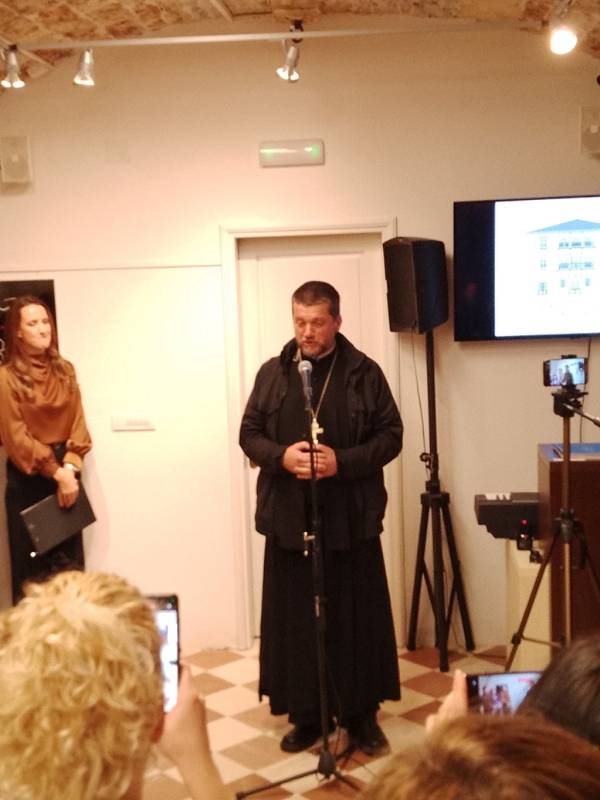
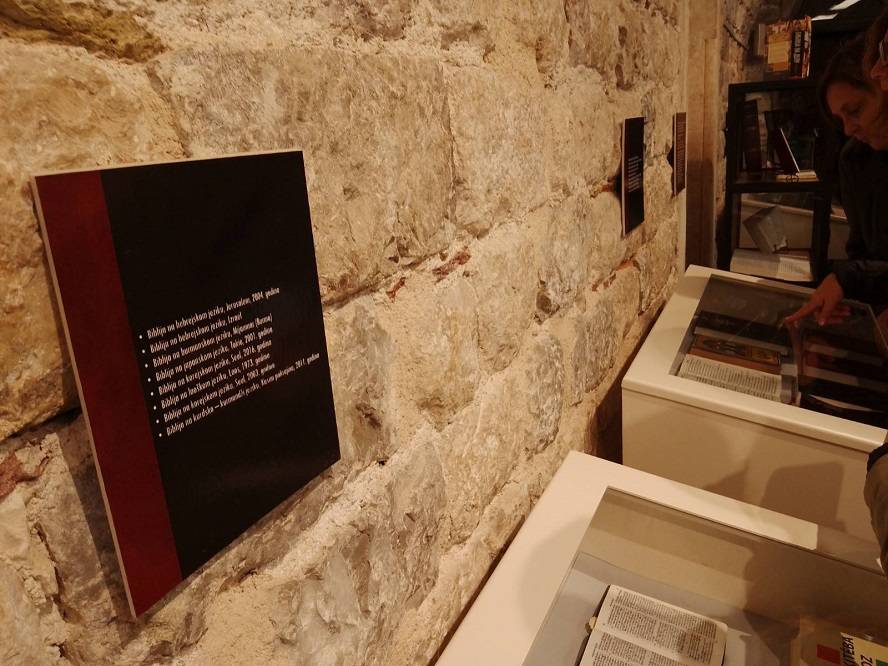
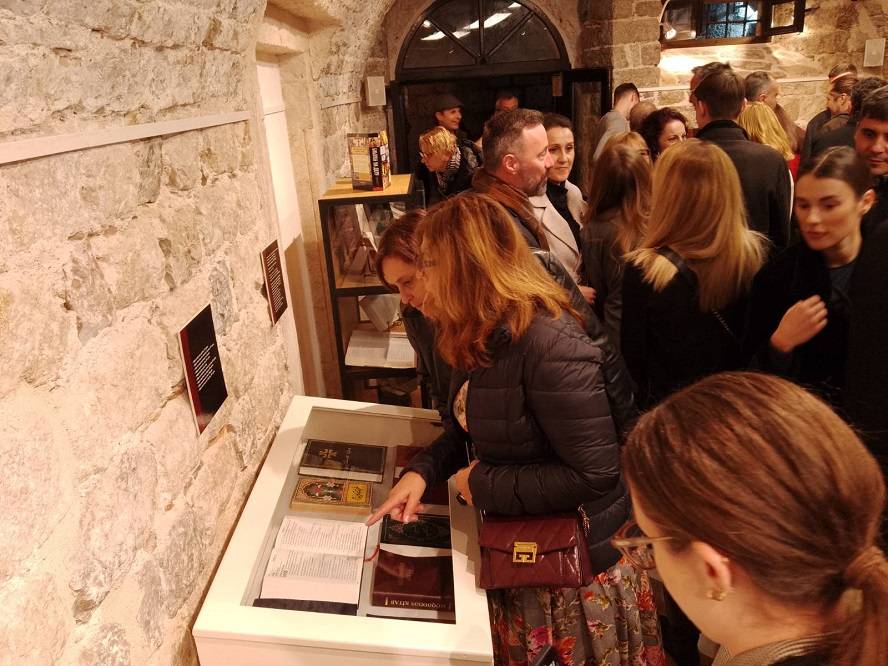
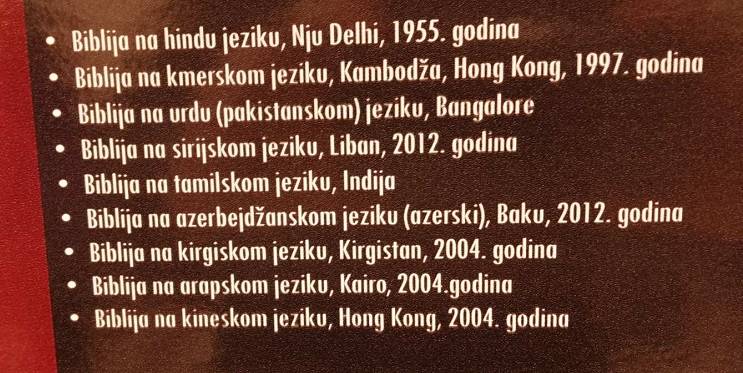
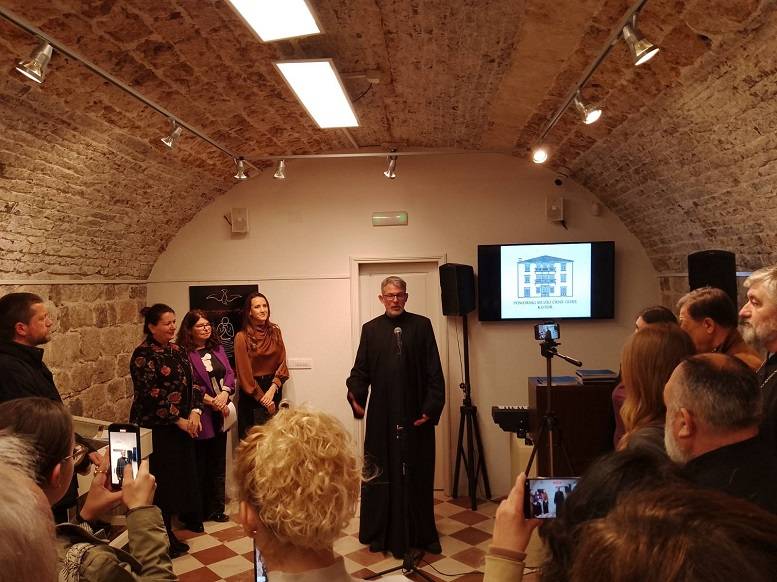
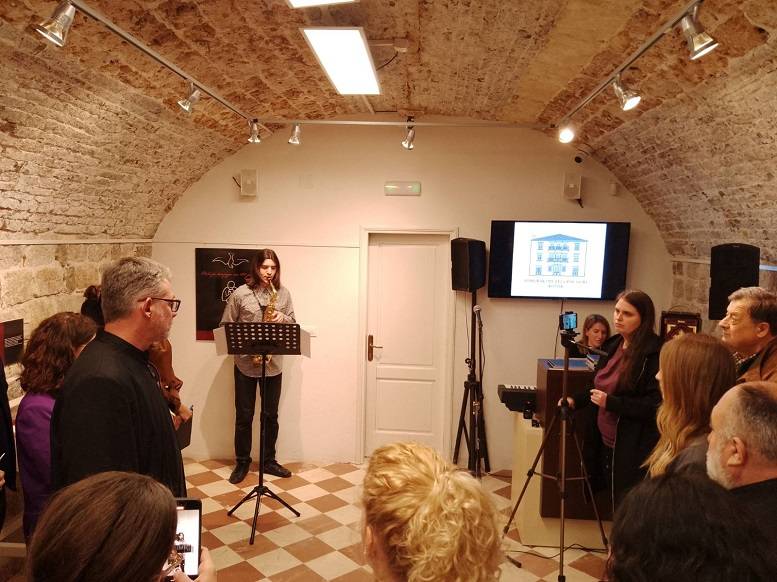
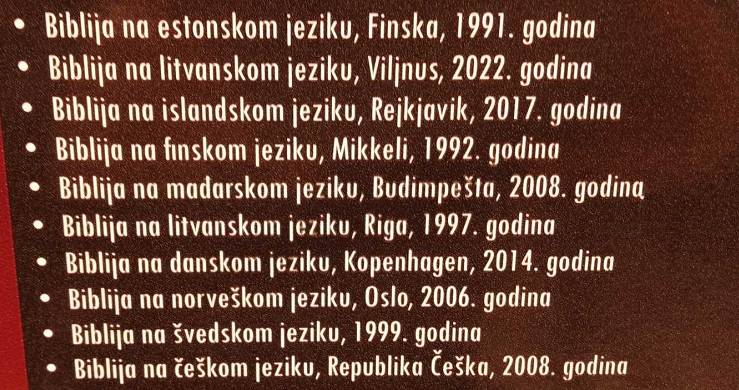
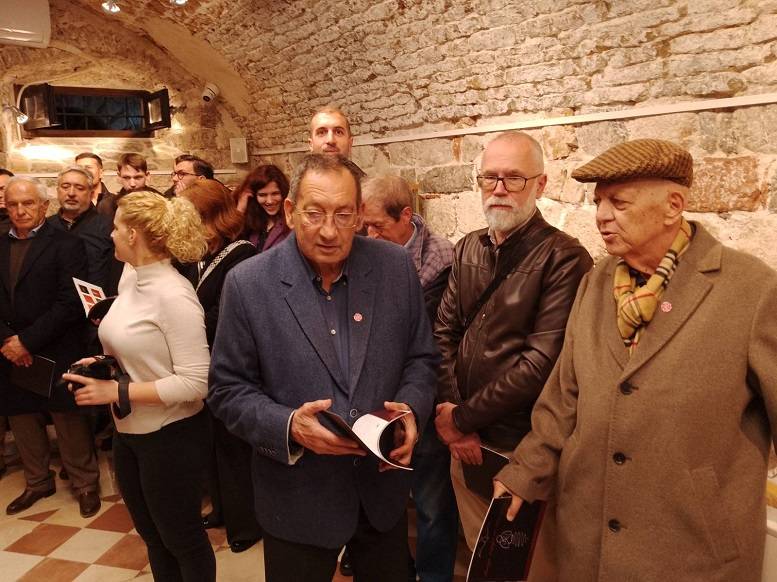
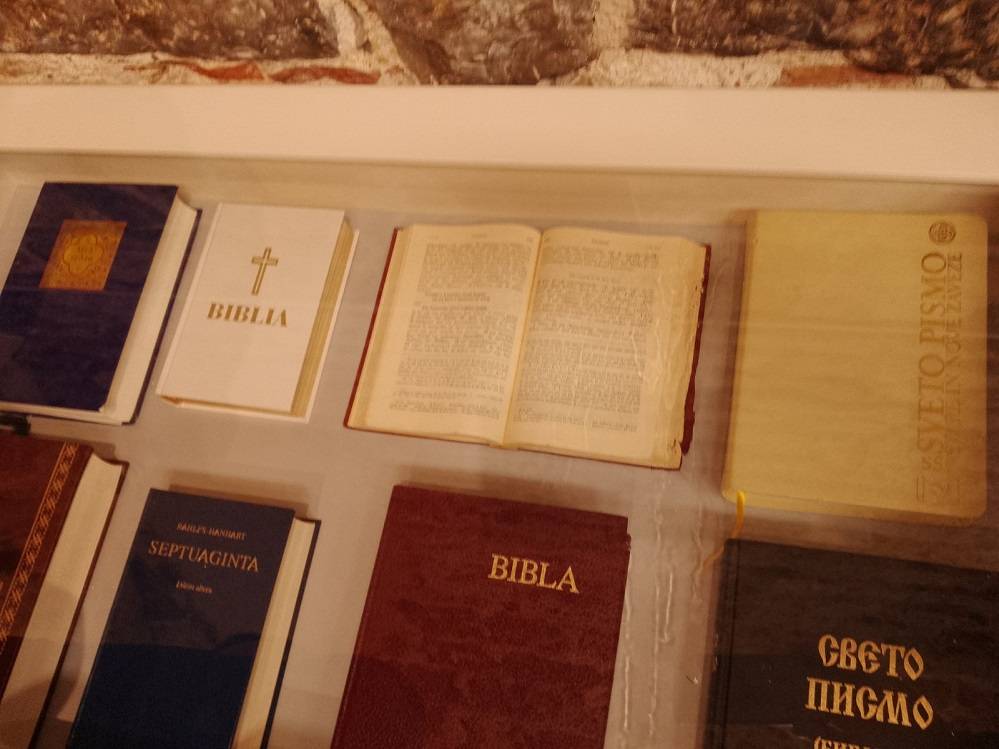
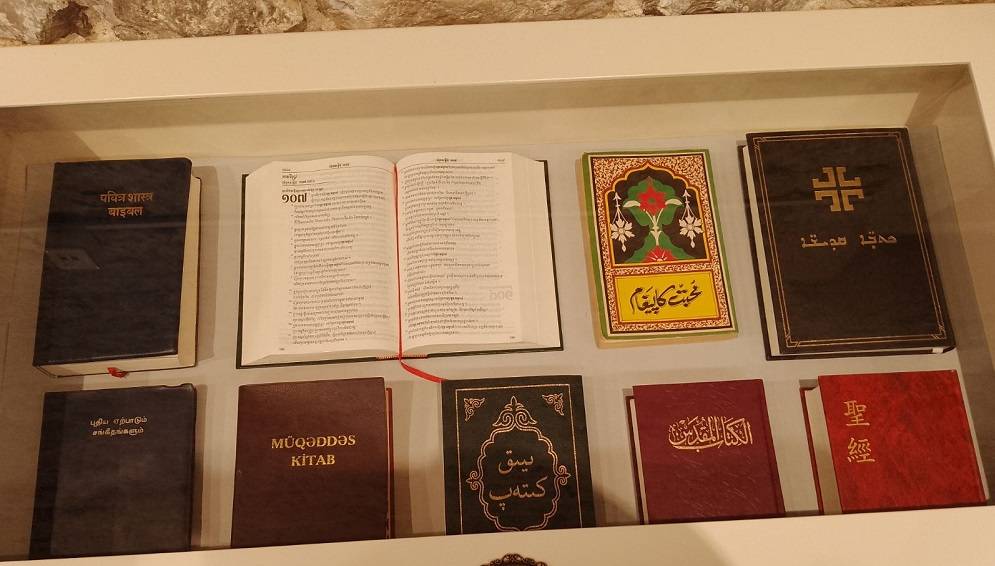
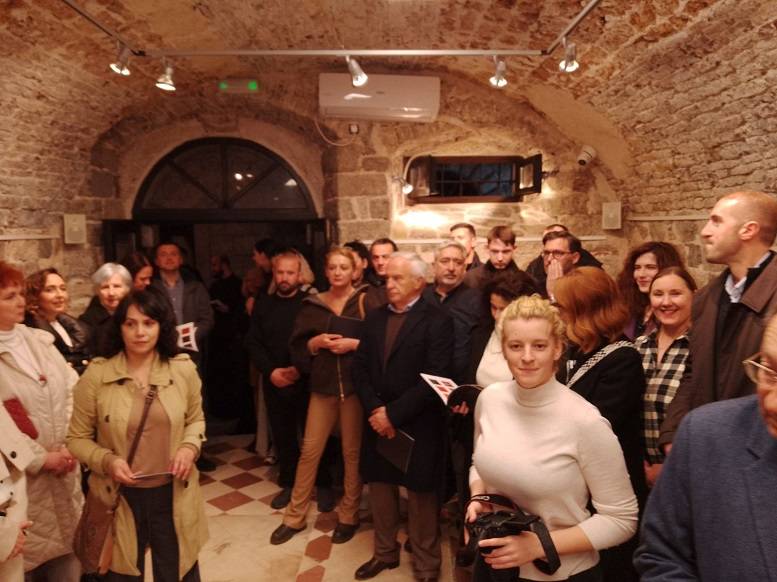
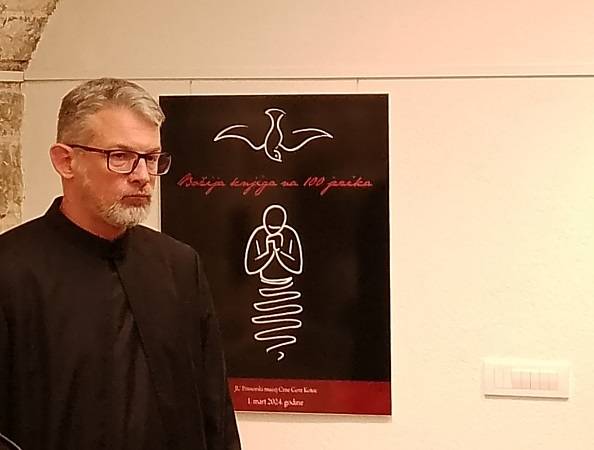
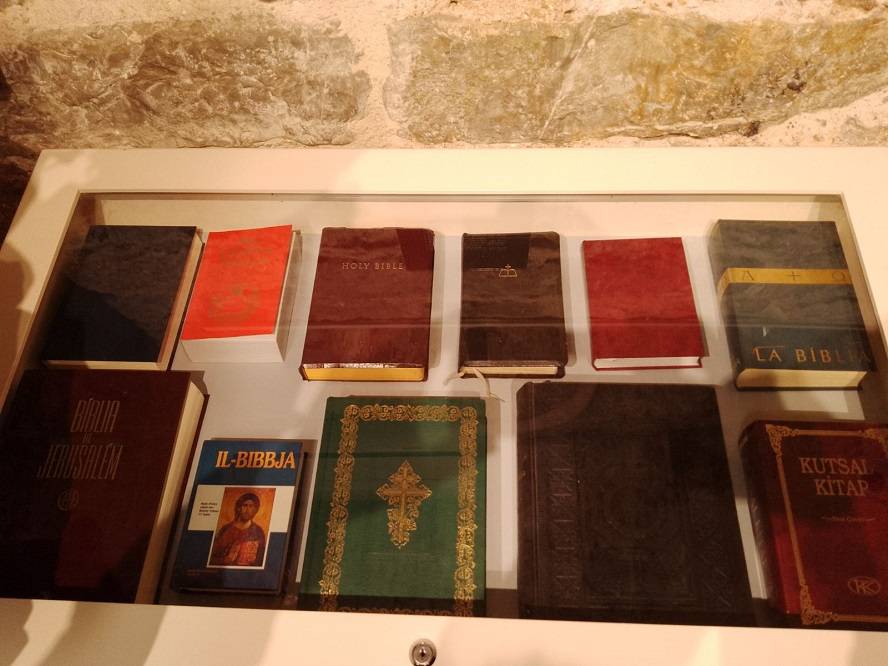
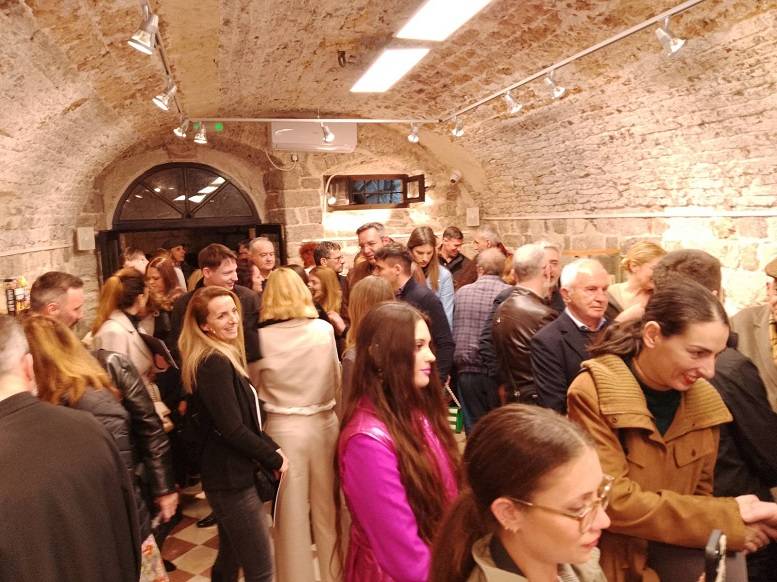
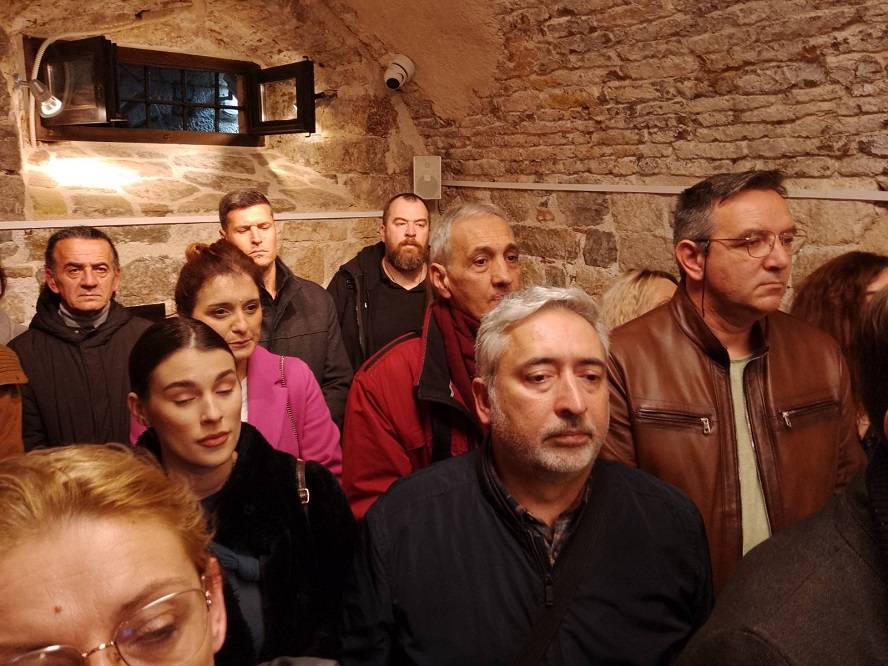
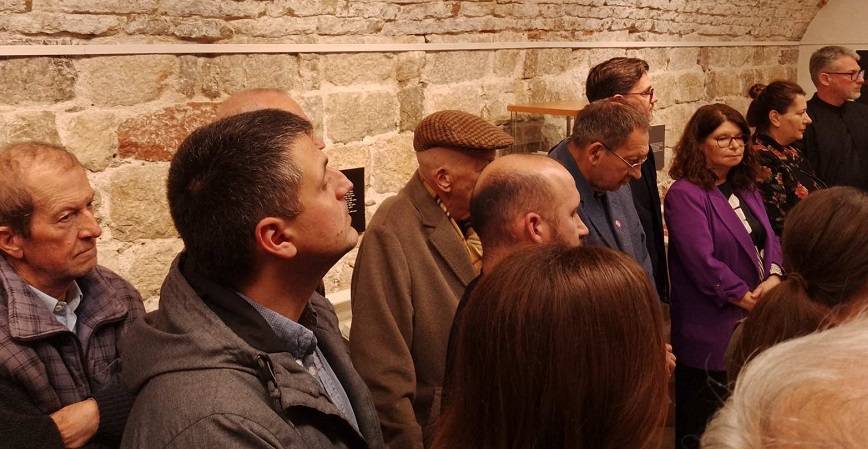
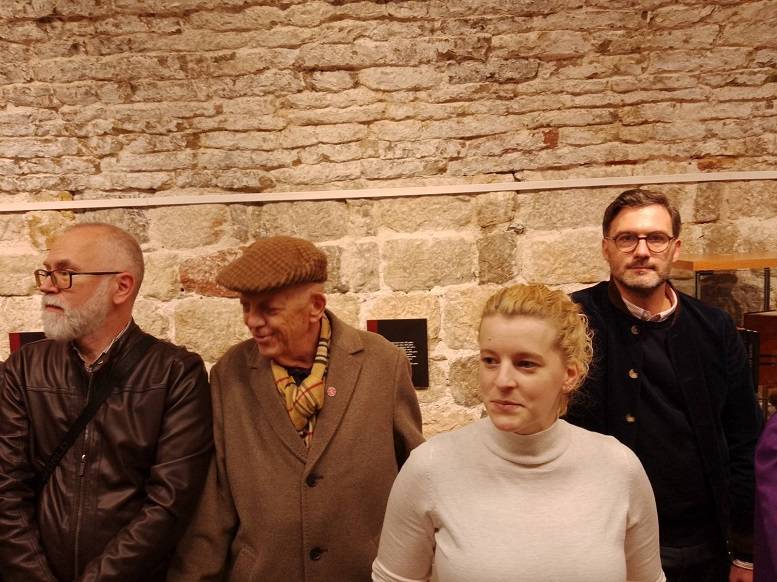
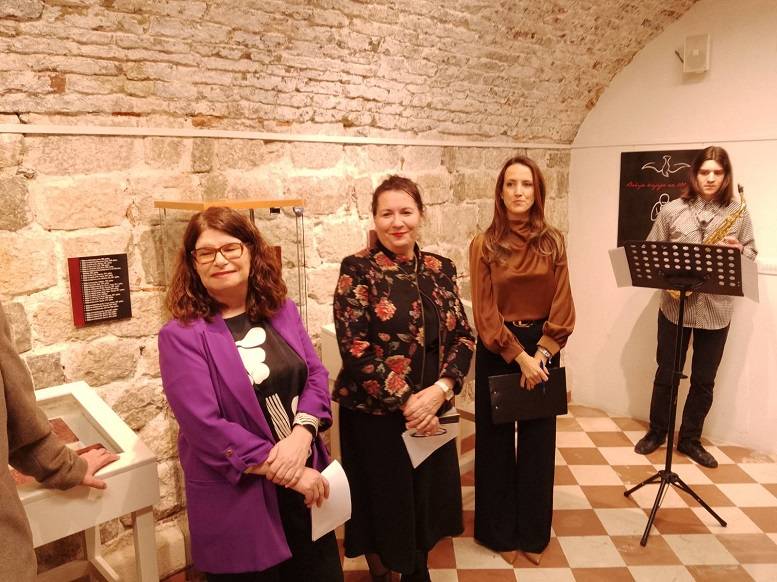
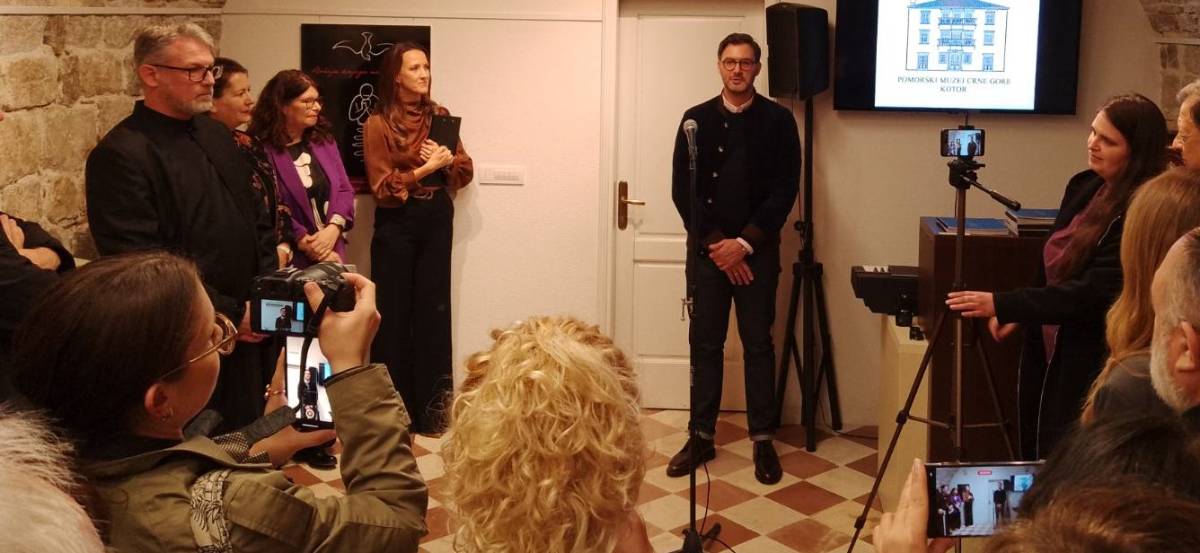
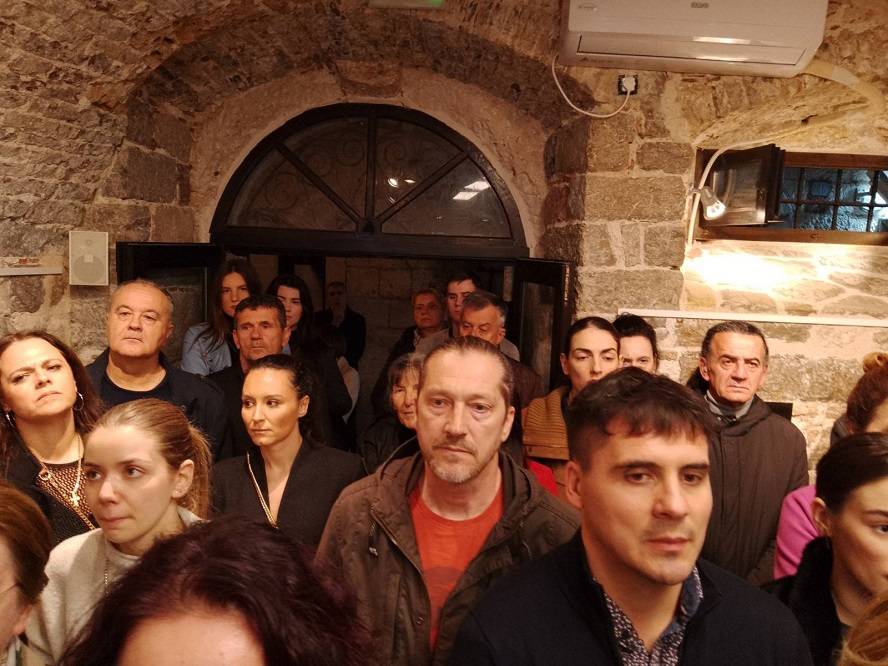
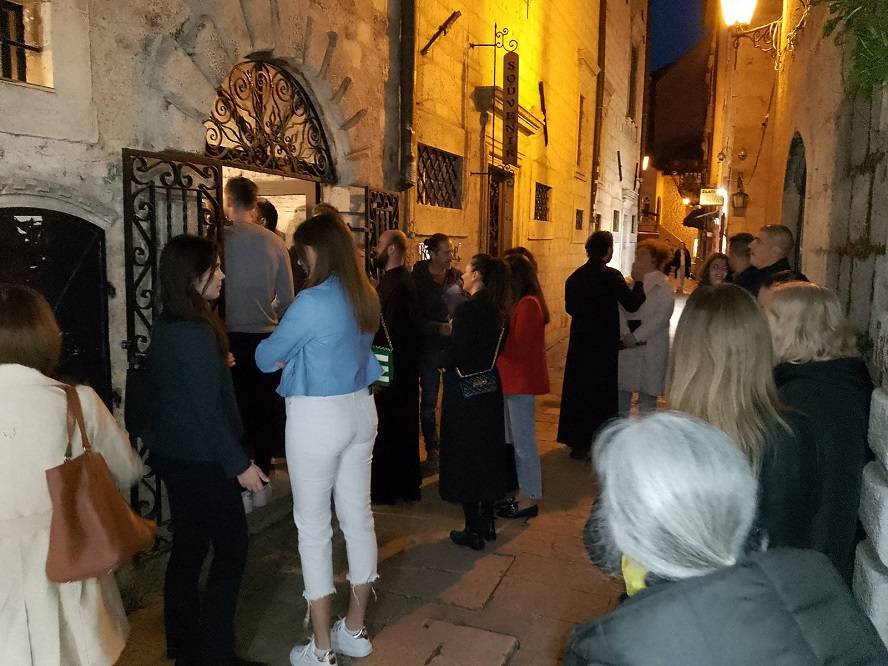
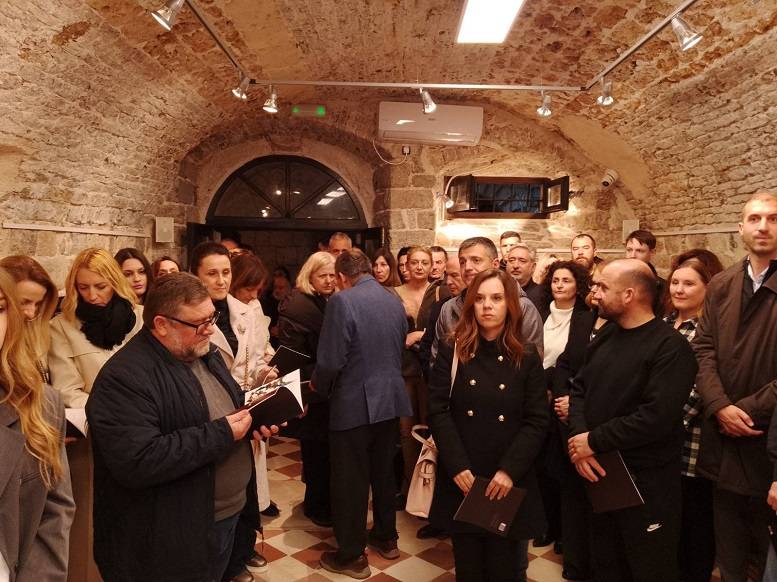
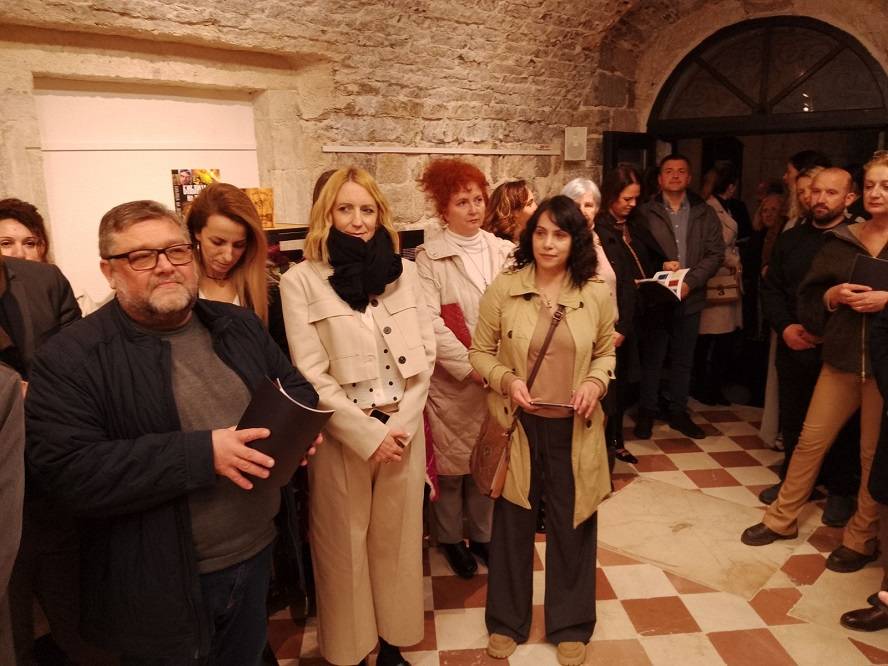
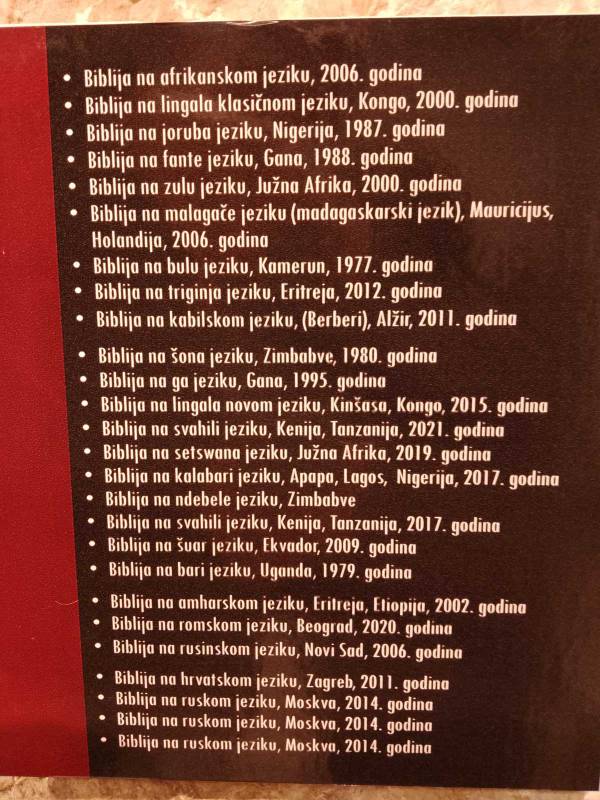
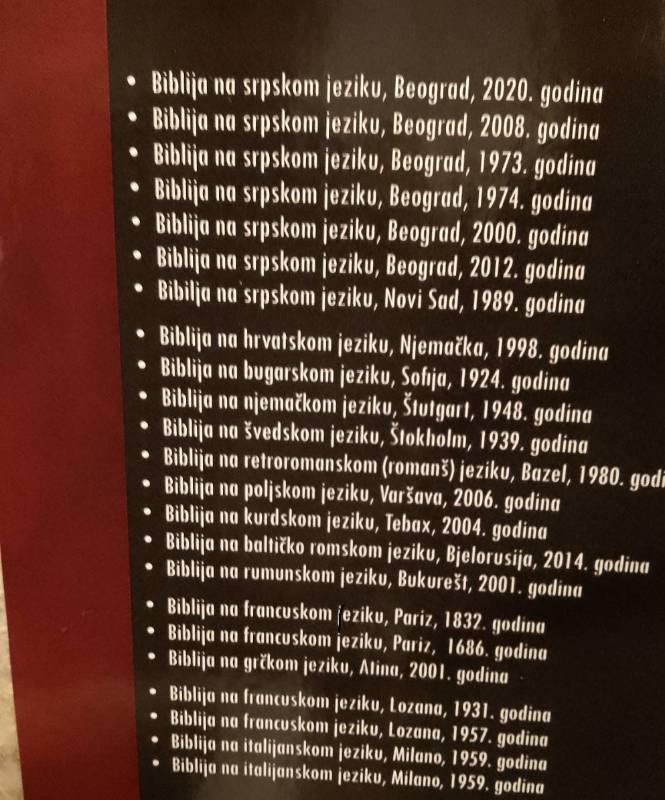
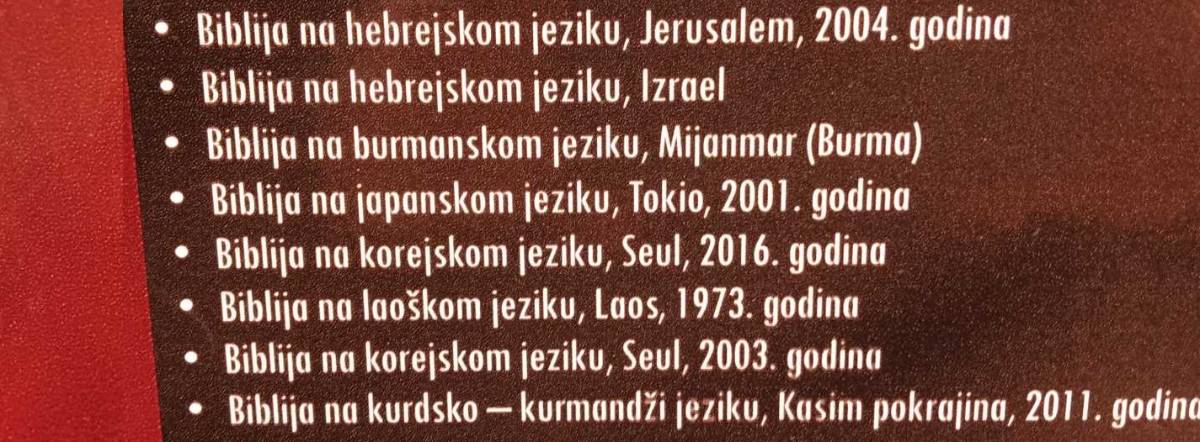
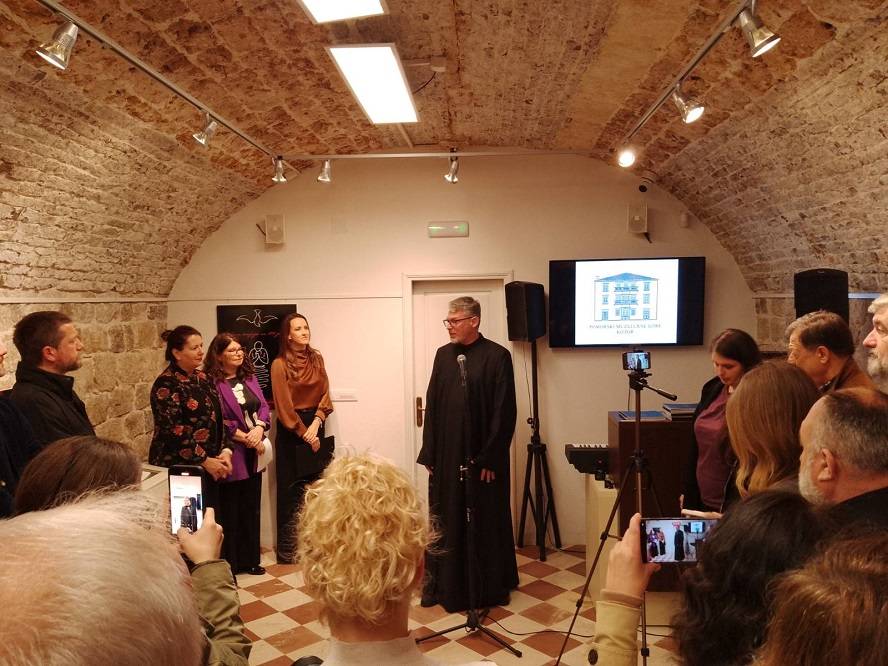
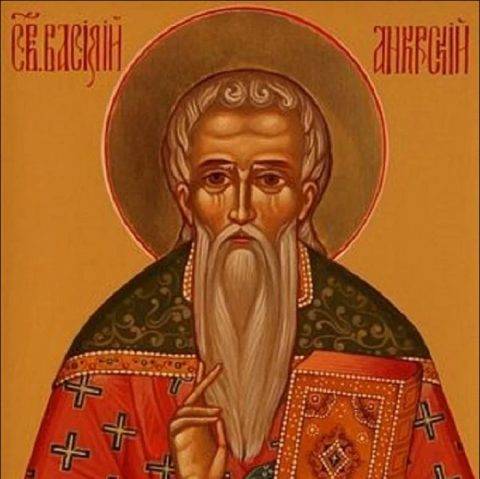
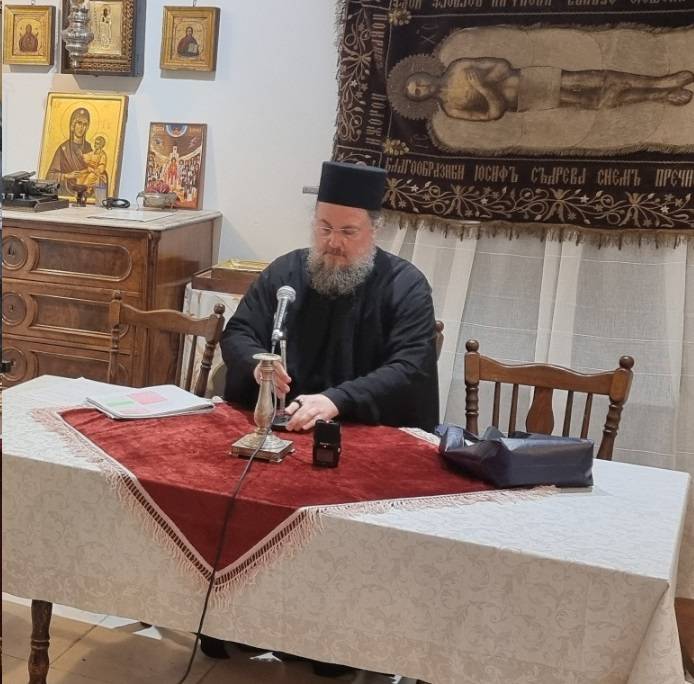
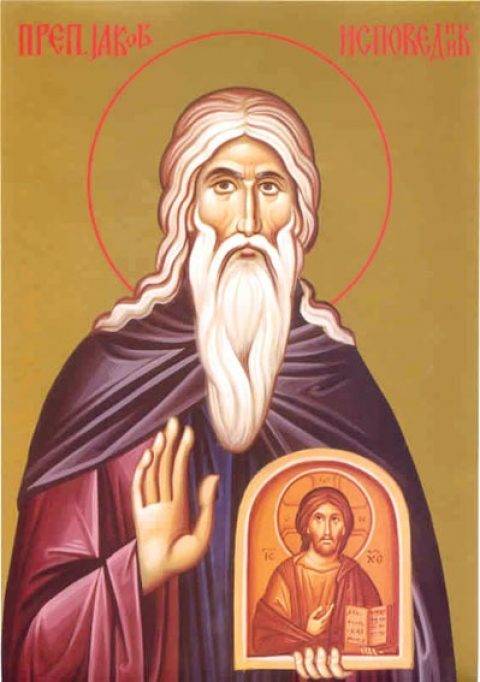

.png)